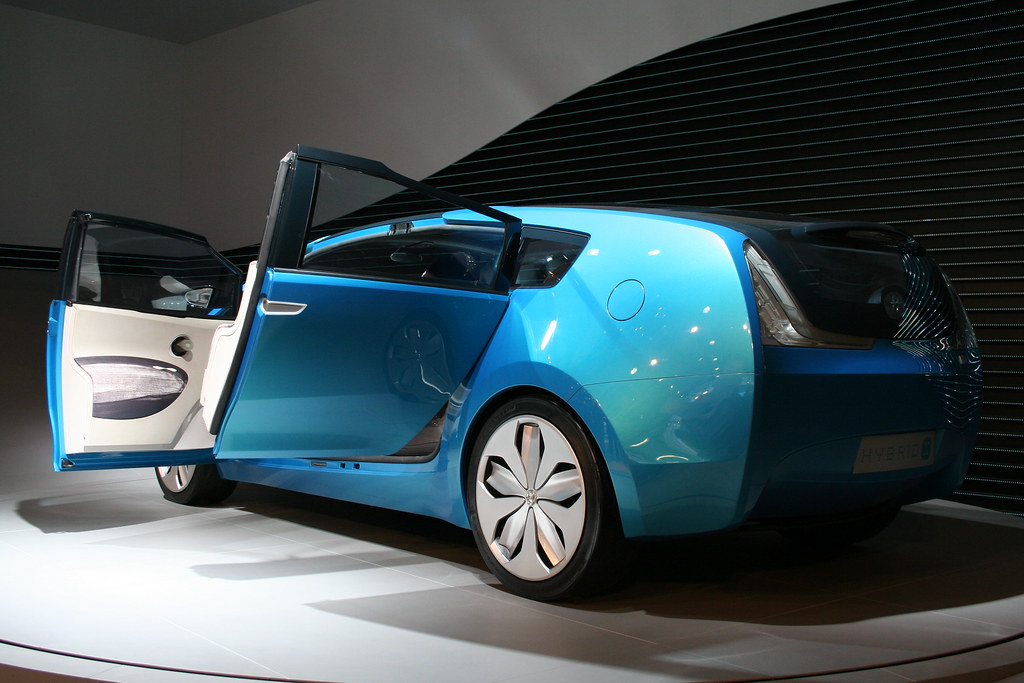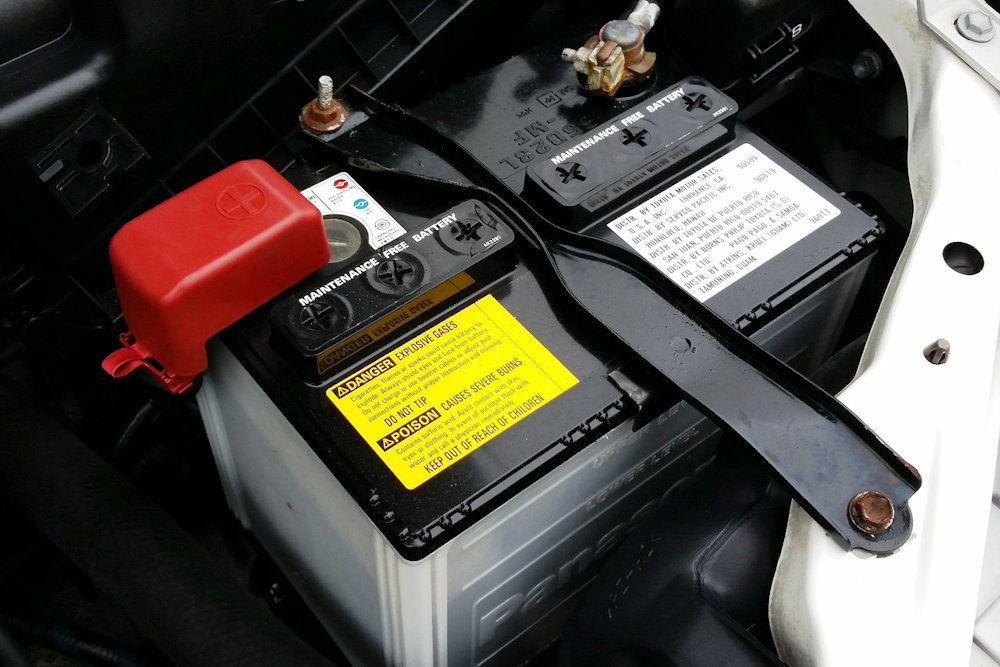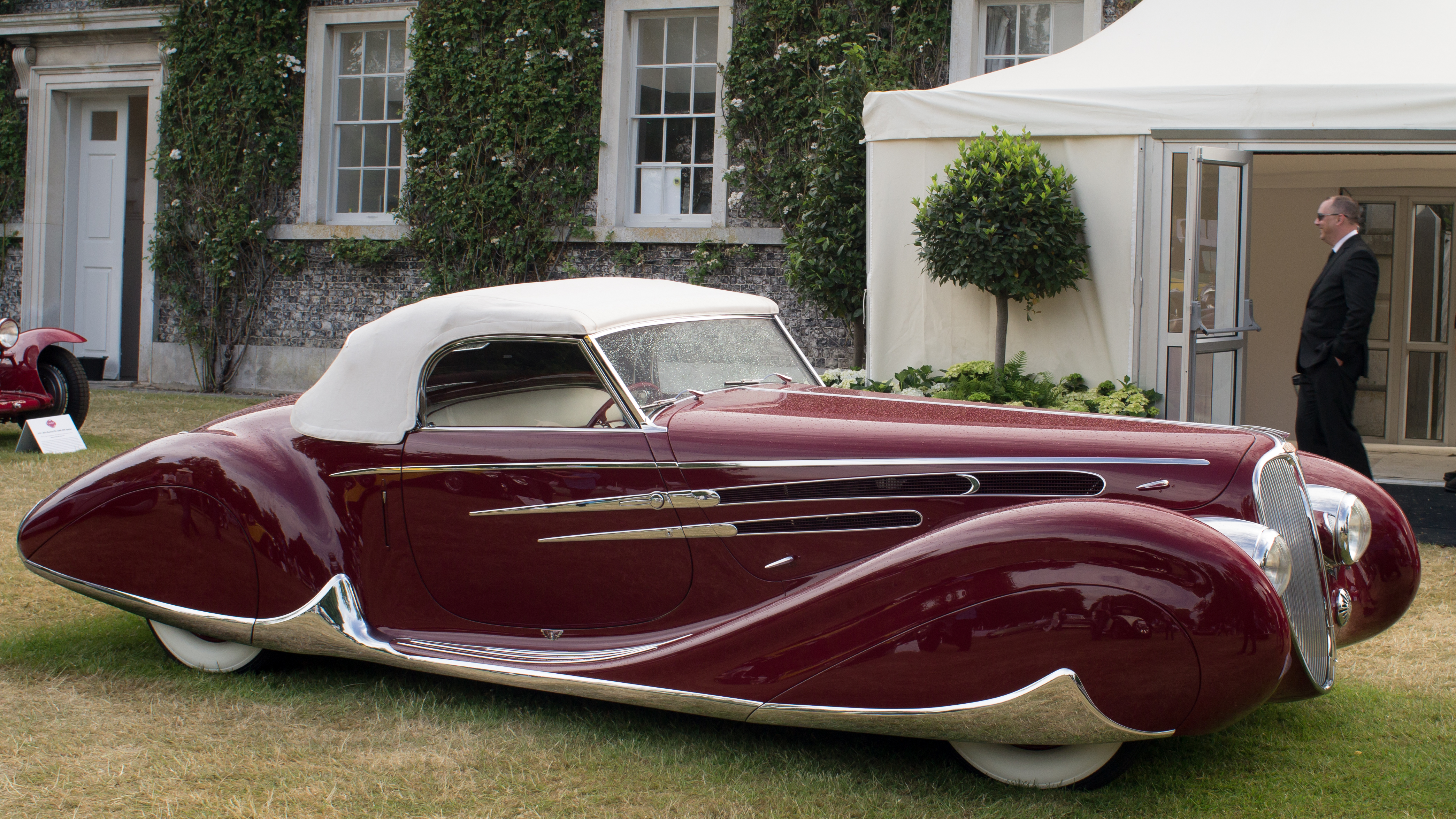
Our love affair with the automobile has lasted for over a century, a journey of freedom and innovation along ribbons of blacktop stretching from one horizon to the next. However, like any enduring relationship, it has navigated rocky patches and significant controversies. Some cars dramatically tested design and engineering boundaries, initially baffling the public and critics alike, often provoking strong reactions from loyalists due to dramatic shifts in philosophy.
The automotive world frequently favors playing it safe, adhering to established norms and consumer expectations. Yet, the most compelling stories emerge from those who dared to defy convention. These bold endeavors, initially seen as missteps, have, with the passage of time, transformed into cherished cult favorites, celebrated by passionate enthusiasts who appreciate their unique quirks and character.
This article delves into the annals of automotive history, spotlighting a selection of these polarizing machines. We’ll explore audacious designs that ignited heated debates, challenged expectations, and ultimately, carved out their indelible mark as iconic symbols of automotive boldness, often finding redemption years after their initial dismissal.
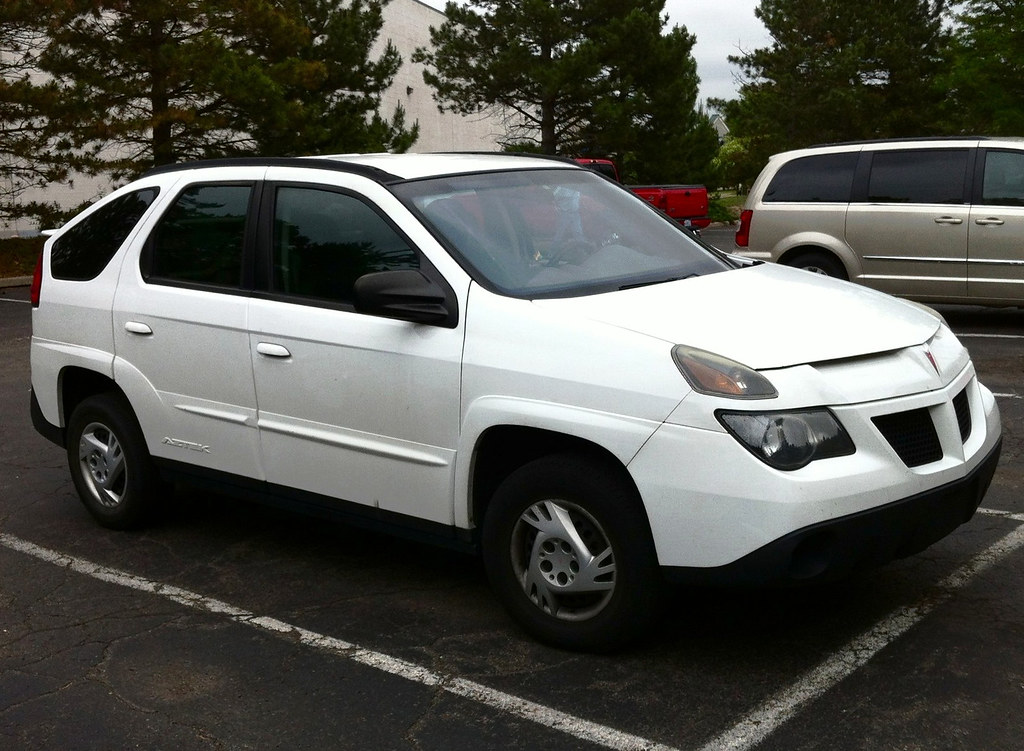
1. **Pontiac Aztek**:The turn of the millennium brought General Motors’ ambitious attempt to redefine the crossover segment with the Pontiac Aztek, launched in 2000. Its design was a visual shockwave, characterized by angular lines, odd proportions, and a distinctive split grille, making it instantly recognizable on the road. Many observers swiftly branded the Aztek as “one of the ugliest cars ever made,” its plastic cladding and unconventional shape drawing immediate ridicule and sparking debates on design innovation.
Despite the initial uproar, the Aztek harbored surprising depth and thoughtful engineering. It offered genuinely ahead-of-its-time features for adventure-ready lifestyles, including an available built-in tent, an integrated cooler, and a versatile cargo system. These functional aspects hinted at a forward-thinking vision for what a crossover could be, anticipating demands long before the market truly caught up.
While its controversial design contributed to its initial commercial struggle, leading it to become “the poster child for automotive design failure,” the Aztek’s story didn’t end there. Its reputation has softened, partly due to its memorable role in pop culture, famously driven by Walter White in “Breaking Bad.” This shift showcases how time and cultural context can transform a once-derided vehicle into an object of ironic affection and appreciation.
Car Model Information: 2004 Pontiac Aztek 4dr All Purpose FWD
Name: Pontiac Aztek
Manufacturer: General Motors
Production: July 2000 – December 2004
Assembly: Ramos Arizpe
Designer: Tom Peters (chief designer: 1997)
Class: Mid-size crossover SUV
BodyStyle: SUV
Platform: GM U platform
Related: Buick Rendezvous
Layout: Front-engine, front-wheel-drive layout
Engine: General Motors 60° V6 engine#LA1,V6
Transmission: GM 4T65-E transmission,Automatic transmission
Wheelbase: 108.3 in (2,751 mm)
Length: 182.1 in (4,625 mm)
Width: 73.7 in (1,872 mm)
Height: 66.7 in (1,694 mm)
Weight: 3,779–4,043 lb (1,714–1,834 kg)
Predecessor: Pontiac Sunrunner
Successor: Pontiac Torrent
ModelYears: 2001–2005
Categories: All-wheel-drive vehicles, All articles needing additional references, All articles with unsourced statements, Articles needing additional references from October 2013, Articles with short description
Summary: The Pontiac Aztek is a mid-size crossover SUV marketed by General Motors introduced in 2000 for the model years 2001 through 2005. As a four-door crossover with front-wheel drive and optional all-wheel drive, the Aztek featured a four-speed automatic transmission with a V6 engine. Marketed by Pontiac as a “sport recreational vehicle,” the Aztek used a shortened platform shared with GM’s minivans (e.g., the Pontiac Montana) featuring 94 cubic feet of cargo room with its rear seats removed. The design employed conventional rear outswing doors rather than sliding doors, and a split rear tailgate, the lower section formed with seat indentations and cupholders. Other features included a front center console that doubled as a removable cooler, optional rear stereo controls in the cargo area, optional sliding cargo floor with grocery compartments, and optional camping package with an attachable tent and air mattress.
Get more information about: Pontiac Aztek
Buying a high-performing used car >>>
Brand: Pontiac Model: Aztek
Price: $995 Mileage: 0 mi.
Read more about: From Bold Blunders to Epic Flops: A Deep Dive into Automotive History’s Most Spectacular Design Failures
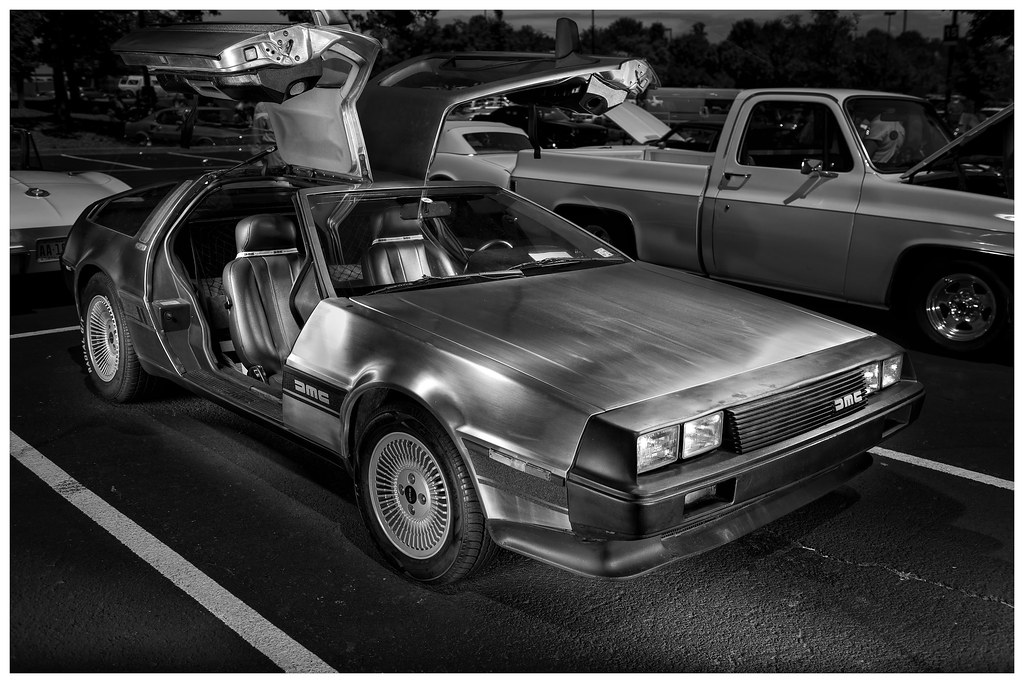
2. **DeLorean DMC-12**:Few cars command as much instant recognition and enduring fascination as the DeLorean DMC-12, a vehicle whose story is as dramatic and unconventional as its iconic design. Conceived by John Z. DeLorean, this stainless steel sports car was intended as an “ethical sports car,” built with corrosion-proof panels and future safety innovations like airbags. Assembled in Northern Ireland, it promised economic revitalization for the troubled region.
Upon its 1981 debut, the DMC-12 captured attention with its striking gull-wing doors and unpainted, brushed metal body, looking plucked straight from a science fiction film. Early reviews, like Car & Driver’s “…first impressions are overwhelmingly positive,” hinted at a revolutionary future. However, reality soon diverged: reviewers criticized the car as “poorly built, unreliable, and too slow,” with a “disappointing” 130-horsepower V6 engine failing to deliver expected performance.
The company faced a calamitous end, plagued by debt, failed government bailouts, and “wonky accounting” that led to bankruptcy, alongside founder John DeLorean’s legal troubles. Yet, the DMC-12 found immortality in “Back to the Future,” transforming it from a troubled commercial failure into “one of the most recognizable cars in pop culture,” ensuring it would “never be forgotten.”
Car Model Information: 1981 Delorean DMC-12
Name: DMC DeLorean
Alt: 1983 DeLorean
Caption: 1983 DeLorean
Manufacturer: DeLorean Motor Company
Production: January 21, 1981 – December 1982
ModelYears: 1981–1983
Assembly: Dunmurry
Designer: Giorgetto Giugiaro
Class: Sports car
BodyStyle: coupé
Layout: Rear-engine, rear-wheel-drive layout
Doors: Gull-wing doors
Engine: 2.85 L
Abbr: on
Powerout: 130 hp
Transmission: 5-speed manual ,3-speed automatic
Wheelbase: 2413 mm
Length: 4267 mm
Width: 1988 mm
Height: 1140 mm
Weight: 1233 kg
Sp: us
Categories: 1980s cars, All Wikipedia articles written in American English, Articles with short description, Automobiles with backbone chassis, Automobiles with gull-wing doors
Summary: The DMC DeLorean is a rear-engine, two-seat sports car manufactured and marketed by John DeLorean’s DeLorean Motor Company (DMC) for the American market from 1981 until 1983—ultimately the only car brought to market by the fledgling company. The DeLorean is sometimes referred to by its internal DMC pre-production designation, DMC-12, although this was not used in sales or marketing materials for the production model.
Designed by Giorgetto Giugiaro, the DeLorean is noted for its gull-wing doors and brushed stainless-steel outer body panels, as well as its lack of power and performance. Though its production was short-lived, the DeLorean became widely known after it was featured as the time machine in the Back to the Future films.
With the first production car completed on January 21, 1981, the design incorporated numerous minor revisions to the hood, wheels and interior before production ended in late December 1982, shortly after DMC filed for bankruptcy and after total production reached an estimated 9,000 units.
Despite the car having a reputation for poor build quality and an unsatisfactory driving experience, the DeLorean continues to have a strong following, driven in part by the popularity of Back to the Future. 6,500 DeLoreans were estimated to still be on the road as of 2015.
Get more information about: DMC DeLorean
Buying a high-performing used car >>>
Brand: DeLorean Model: DMC-12
Price: $37,500 Mileage: 0 mi.
Read more about: 14 Classic Cars That Should Have Been Great (But Horrible Design Flaws Ruined Everything)
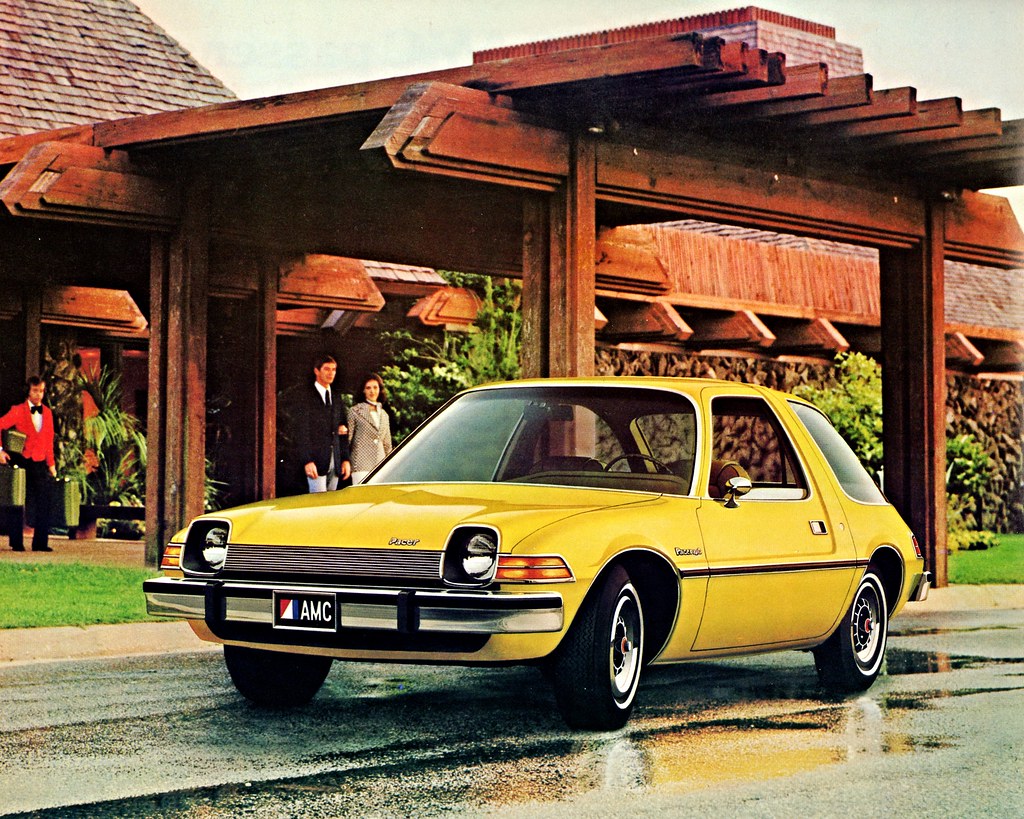
3. **AMC Pacer**:In the mid-1970s, AMC introduced the Pacer, launched in 1975, a car “unlike anything else on American roads.” Its defining features were a wide, rounded greenhouse and a short, stubby body that immediately earned it the moniker of a “fishbowl on wheels.” This bold statement from a risk-taking manufacturer aimed to maximize interior space and driver visibility.
However, its unconventional aesthetics overshadowed these goals. The car’s “bubble-shaped” proportions, combined with “asymmetrical doors,” “confused buyers expecting conventional American styling.” Many found the look “odd and ungainly,” struggling to reconcile its radical form. Its audacity, while initially sparking curiosity, led to commercial struggles as “curiosity among buyers faded quickly.”
Despite its polarizing looks making it a difficult sell, the Pacer enjoys a unique place in automotive lore today. It’s remembered as a “symbol of 1970s automotive eccentricity,” a testament to design experimentation. What was once mocked is now “beloved by some for its uniqueness,” even earning “respect at car shows,” proving that originality can find devoted admirers.
Read more about: Classic Car Owners Beware: 15 Problematic Investments and Financial Hazards Exposed
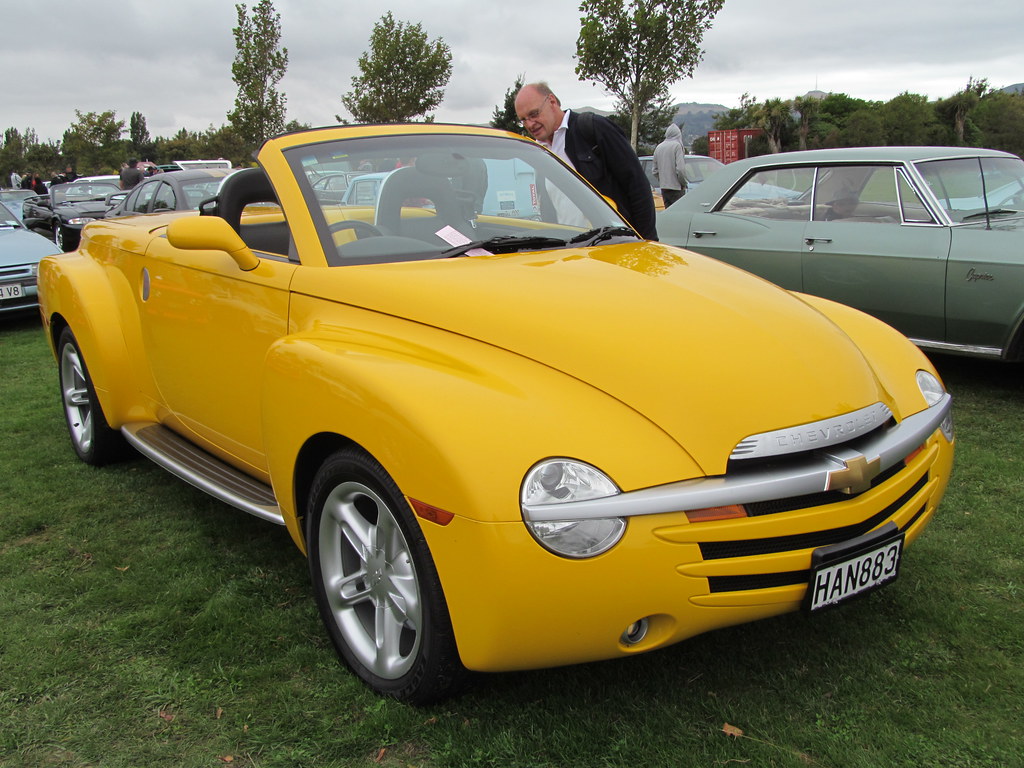
4. **Chevrolet SSR**:The early 2000s saw Chevrolet introduce the SSR (Super Sport Roadster) in 2003, a vehicle that was as much a head-turner as a head-scratcher. This audacious creation blended a retro-inspired roadster with a pickup truck bed, resulting in an “unusual combination” that instantly sparked debate and left many observers “scratching their heads.”
The SSR’s design paid homage to classic Chevy trucks with curvaceous fenders and a retractable hardtop. However, its hybrid nature created an “identity crisis,” making it difficult to categorize. Critics argued it was “neither a true sports car nor a practical truck,” a polarizing design contributing to “lukewarm sales and a brief production run.”
Beyond aesthetics, the SSR faced challenges with its “hefty price tag” and “5,000-pound curb weight.” Early models with a 300-horsepower V8 “struggled to deliver the performance its muscle car looks promised.” Although a later upgrade to a 390-horsepower LS2 engine improved acceleration, the market had largely shifted. Yet, for those who appreciated its “nostalgic flair” and “unconventional charm,” the SSR found a niche as a “distinctive collector’s item.”
Car Model Information: 2004 Chevrolet SSR LS
Name: Chevrolet SSR
Manufacturer: Chevrolet
Production: 2003–2006
ModelYears: 2003–2006
Assembly: Lansing, Michigan
Class: Pickup truck
BodyStyle: ubl
Platform: GMT360
Related: ubl
Layout: Front-engine, rear-wheel drive layout
Engine: ubl
Transmission: ubl
Wheelbase: 116.0 in
Abbr: on
Length: ubl
Width: 78.6 in
Height: ubl
Designer: ubl
Categories: All articles needing additional references, All articles with unsourced statements, Articles needing additional references from July 2008, Articles with short description, Articles with unsourced statements from August 2023
Summary: The Chevrolet SSR (Super Sport Roadster) is a retro-styled and retractable hardtop convertible pickup truck manufactured by Chevrolet between 2003 and 2006.
During the 2003 and 2004 model years, the SSR used General Motors’ 5.3 L 300 hp (224 kW; 304 PS) Vortec 5300 V8. Performance was 7.7 seconds for 0–60 mph (0–97 km/h) with a 15.9 second 1⁄4 mile (402.3 m) time at 86.4 mph (139.0 km/h).
For the 2005 model year, the SSR used the 390 hp (291 kW; 395 PS) LS2 V8 engine also used in the C6 Corvette, Trailblazer SS, and Pontiac GTO, now offering a manual transmission option, the six-speed Tremec, for the first time. Performance improved dramatically with the LS2; the 6-speed manual version had an advertised 0–60 mph (97 km/h) acceleration time of 5.29 seconds. In addition, GM badges were added to the vehicle.
For 2006, output of the LS2 increased to 395 hp (295 kW; 400 PS).
Get more information about: Chevrolet SSR
Buying a high-performing used car >>>
Brand: Chevrolet Model: SSR
Price: $20,899 Mileage: 54,685 mi.
Read more about: The Winter Durability Report: 5 Cars That Rust Rapidly, 5 That Stand Strong Against Corrosion

5. **Subaru Baja**:Subaru introduced the Baja in 2003, pushing automotive categories once again. This distinctive vehicle “straddled the line between car and truck,” presenting a unique proposition that initially left “both critics and buyers unsure of how to categorize it.” It was an innovative attempt to combine aspects of a sedan, SUV, and pickup into a single, versatile package.
Built on the reliable Outback platform, the Baja featured a compact 3.5-foot bed. This design meant it “lacked the hauling power of a traditional pickup,” potentially alienating conventional truck buyers, but offered “a smoother, more car-like driving experience.” At its launch, the Baja struggled to find a clear audience, as its blurred identity perplexed consumers accustomed to more defined vehicle segments.
Despite initial commercial ambiguity, the Subaru Baja has experienced a resurgence. Today’s outdoor enthusiasts and those seeking “adventure-ready lifestyle vehicles” increasingly recognize the Baja for what it was: a “forward-thinking blend of utility and comfort.” It was an early pioneer in a segment now experiencing significant demand, proving some controversial designs are simply “ahead of their time.”
Car Model Information: 2005 Subaru Baja Turbo
Name: Subaru Baja
Caption: 2006 Subaru Baja Sport
Manufacturer: Subaru-Isuzu Automotive, Inc.
Production: July 2002 – April 2006
ModelYears: 2003–2006
Assembly: United States
Class: Compact SUV
BodyStyle: coupé utility
Layout: Front-engine, four-wheel-drive layout
Engine: Subaru EJ engine#EJ251,Subaru EJ engine#EJ253,Subaru EJ engine#EJ255
Transmission: Automatic transmission,Manual transmission
Wheelbase: 104.3 in
Abbr: on
Disp: flip
Length: 193.1 in
Width: 70.1 in
Height: 2003–04: {{convert,64.2,in,mm,0,abbr=on,disp=flip
Related: Subaru Legacy (third generation)
Predecessor: Subaru BRAT
Categories: All-wheel-drive vehicles, Articles with short description, Cars discontinued in 2006, Cars introduced in 2002, Commons category link from Wikidata
Summary: The Subaru Baja is an all-wheel-drive, four passenger coupé utility manufactured from 2002 to 2006 by Subaru and marketed for model years 2003 to 2006. The Baja combines the handling and passenger carrying characteristics of a traditional passenger car with the open-bed versatility and load capacity of a small pickup truck.
The unibody design borrowed heavily from the existing mechanicals, platform and sheet metal of the Subaru Legacy/Outback wagon. Production began on July 18, 2002 as a 2003 model at the Subaru of Indiana Automotive, Inc. factory in Lafayette, Indiana.
The name Baja derives from the Mexican peninsula of Baja California; home to the Baja 1000 off-road race.
Get more information about: Subaru Baja
Buying a high-performing used car >>>
Brand: Subaru Model: Baja
Price: $8,000 Mileage: 242,210 mi.
Read more about: Unleash the Beast: Exploring Pickup Trucks with Unrivaled Towing and Payload Capabilities

6. **Plymouth Prowler**:The late 1990s saw Chrysler commit to retro styling with the Plymouth Prowler, launched in 1997. This “radical departure from mainstream design” was a street-legal hot rod, appearing “like a concept car that somehow escaped the design studio.” It was “pure visual drama,” instantly commanding attention wherever it appeared.
Inspired by 1930s hot rods, the Prowler featured “open front wheels,” a “pointed nose,” and a “low-slung body.” Its aluminum body created an “unmistakable hot rod silhouette.” This audacious aesthetic met mixed reactions: “some enthusiasts applauded Chrysler’s willingness to take risks,” while others found its “retro-futuristic look too extreme for daily driving,” questioning its practicality.
Underneath its dramatic exterior, the Prowler housed a 3.5-liter V6 engine and an automatic transmission, components “borrowed from a Chrysler minivan.” These choices didn’t “thrill purists,” but the Prowler’s appeal was never about raw speed. Its “limited practicality and bold styling ensured it remained a niche vehicle,” yet it has cemented its place in automotive culture, earning “a devoted following among collectors who appreciate its daring spirit.”
Car Model Information: 1997 Plymouth Prowler Roadster
Name: Plymouth Prowler
Manufacturer: Chrysler Corporation
Production: 1997–2002,11,702 produced
Assembly: Detroit, Michigan
Class: Sports car
Layout: Front-engine, rear-wheel-drive layout#Front mid-engine, rear-wheel-drive layout
Platform: Chrysler PR platform
BodyStyle: Roadster (automobile)
Engine: Chrysler SOHC V6 engine#3.5,V6 engine
Transmission: Ultradrive#A606/42LE,automatic transmission
Aka: Chrysler Prowler (2000–2002)
Wheelbase: cvt
Length: cvt
Width: cvt
Height: cvt
Weight: cvt
Successor: Chrysler Crossfire
Designer: Tom Gale (designer)
Caption: 2000 Plymouth Prowler
Categories: 2000s cars, All articles needing additional references, Articles needing additional references from November 2015, Articles with short description, Cars introduced in 1997
Summary: The Plymouth Prowler, later the Chrysler Prowler, is a two-door, two-seat sports car, manufactured and marketed by DaimlerChrysler for model years 1997 through 2002. It is widely known for its hand-crafted aluminum bodywork and its retro-hot rod styling with open, Indy racer-style front wheels.
Based on the 1993 concept car of the same name, Chrysler offered the Prowler over a single generation, with a V6 front-engine, and a rear-transaxle, rear-drive configuration. Total production was 11,702 Plymouth- and Chrysler-branded Prowlers.
Get more information about: Plymouth Prowler
Buying a high-performing used car >>>
Brand: Plymouth Model: Prowler
Price: $34,998 Mileage: 3,142 mi.
Read more about: 14 Classic Cars That Should Have Been Great (But Horrible Design Flaws Ruined Everything)
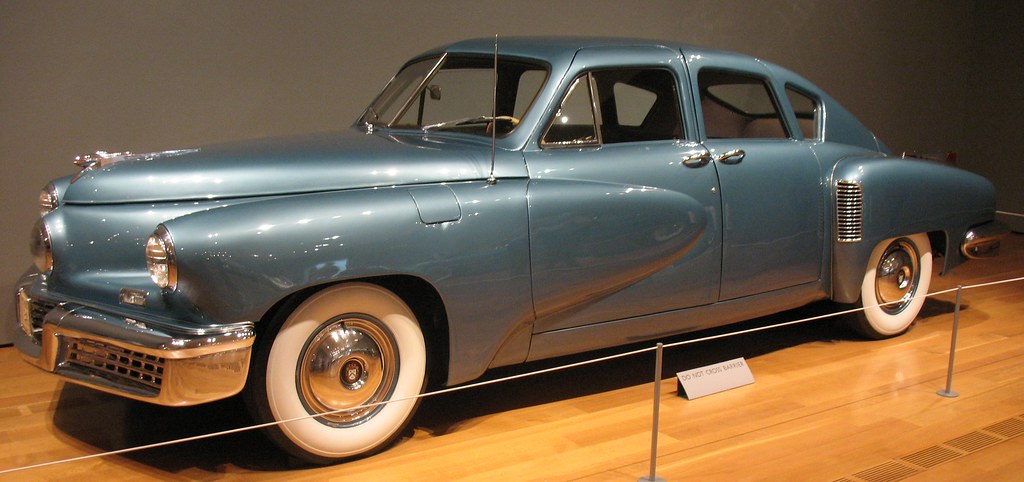
7. **Tucker 48 Torpedo**:Preston Tucker’s vision for the Tucker 48 Torpedo was nothing short of revolutionary, aiming to redefine the automotive landscape in the post-war years. While other carmakers were content to build designs that already looked dated upon release, Tucker’s approach was a complete reimagining of the American automobile, offering a refreshing glimpse into a sleeker, more advanced future. Its curvy lines and distinctive profile truly looked futuristic in 1948, immediately setting it apart from its contemporaries.
The innovative spirit extended far beyond its striking aesthetics. The Tucker 48 famously featured a rear-engine arrangement, an unheard-of configuration for a sedan at the time. Safety was paramount in Tucker’s design philosophy, evident in groundbreaking features like a pop-out windshield and a padded dash, elements considered radical for their era. Perhaps its most iconic innovation was the center headlight that swiveled with the front wheels, illuminating the path around corners and showcasing a profound commitment to driver visibility and safety.
However, Tucker’s ambition was matched only by the formidable financial challenges he faced. To secure the necessary capital, he embarked on controversial fundraising tactics, including selling over 1,800 dealership franchises and implementing an accessories program that allowed customers to purchase items like radios and seat covers to guarantee early delivery. These aggressive strategies, while raising millions, triggered an SEC investigation. The leaked report of this investigation coincided with Tucker’s plans to issue stock, leading to fraud and conspiracy indictments against him and seven executives. Though ultimately cleared of the charges, the damage was done; the company went bankrupt, and the dream, tragically, died.
Despite its calamitous commercial end and the scandal that marred its brief existence, the Tucker 48 has achieved a remarkable posthumous acclaim. Only 51 units were ever built, yet this rarity, combined with its visionary design and unfulfilled promise, has elevated it to legendary status. In recent years, these sleek, innovative sedans have commanded prices nearing $3 million, a testament to how time has transformed what was once an unappreciated vision into an iconic symbol of daring innovation and automotive “what might have been.”
Car Model Information: 2023 GMC Sierra 1500 AT4X
Caption: 1948 Tucker 48 sedan (chassis #1051)
Name: Tucker 48
Production: 1947–1948,total of 50 cars completed
ModelYears: 1948
Manufacturer: Preston Tucker
Class: Sedan (automobile)
Designer: Alex Tremulis,Read Viemeister
Engine: Overhead valve engine,334.1 cuin
Abbr: on
Transmission: Cord 810/812; Tucker Y-1 (Modified Cord 810/812); , TuckerMatic (R-1, R-1-2, R-3 versions)
Layout: Rear-engine, rear-wheel-drive layout
Wheelbase: 128.0 in
Length: 219.0 in
Height: 60.0 in
Width: 79.0 in
Assembly: Chicago,Illinois
Weight: 4200 lb
Categories: 1940s cars, 1948 establishments in the United States, All Wikipedia articles in need of updating, All articles needing additional references, All articles with unsourced statements
Summary: The Tucker 48, originally named and still commonly referred to as the Tucker Torpedo, was an automobile conceived by Preston Tucker while in Ypsilanti, Michigan, and briefly produced in Chicago, Illinois, in 1948. Only 51 cars were made including their prototype before the company was forced to cease all operations on March 3, 1949, due to negative publicity initiated by the news media, a Securities and Exchange Commission investigation, and a heavily publicized stock fraud trial (in which the allegations were proven baseless and led to a full acquittal). Tucker suspected that the Big Three automakers and Michigan Senator Homer S. Ferguson had a role in the Tucker Corporation’s demise.
The 48’s original proposed price was said to be $1,000, but the actual selling price was closer to $4,000.
The 1988 movie Tucker: The Man and His Dream is based on the saga surrounding the car’s production. The film’s director, Francis Ford Coppola, is a Tucker owner and displays his vehicle on the grounds of his winery.
The Tucker 48 is often referred to as the Tucker Torpedo. However, the Torpedo was actually a prototype, and the name was never used for the production model, which was officially called the “Tucker 48”.
Get more information about: Tucker 48
Buying a high-performing used car >>>
Brand: Tucker Model: 48 Torpedo
Price: $64,995 Mileage: 13,767 mi.
Read more about: Unlocking True Value: 14 Critical Questions to Ask Your Classic Car Appraiser
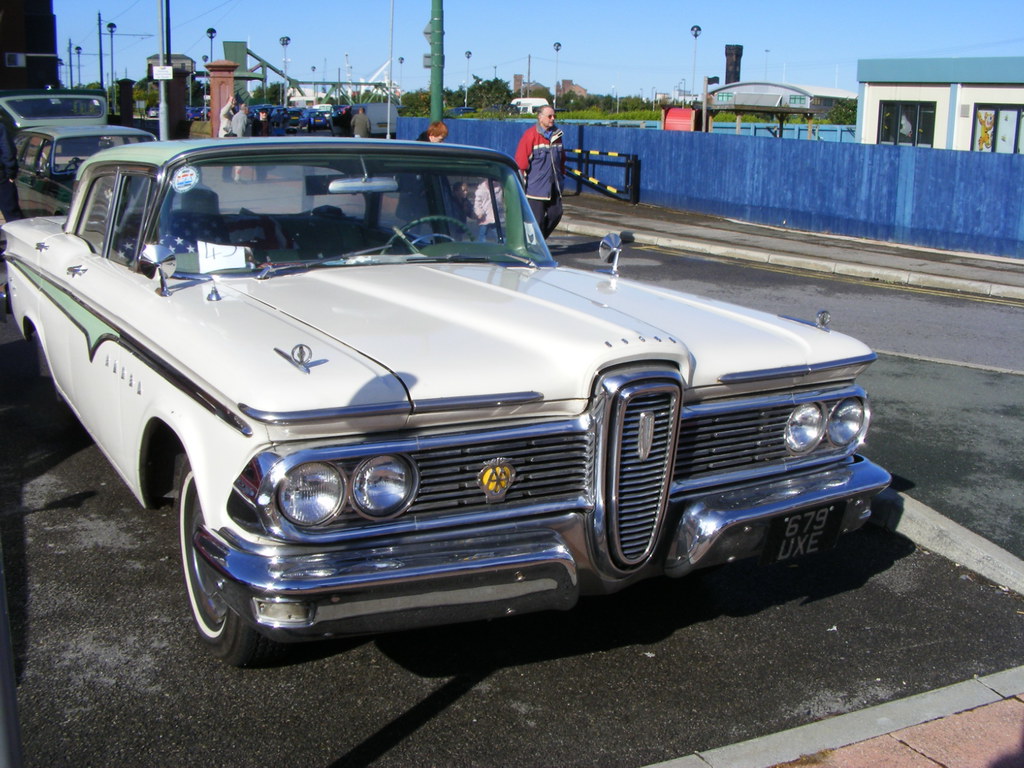
8. **Ford Edsel**:The Ford Edsel brand was conceived as a monumental leap for the automaker, intended to be its first entirely new car line in decades and a clean-sheet approach to automotive design. Ford poured millions into market research, aiming to carve out a niche that would appeal to both young, performance-oriented buyers and more traditional, middle-aged Buick drivers. The goal was to expand Ford’s strategy, creating a nameplate that could squarely compete with GM’s mid-range offerings and Dodge and DeSoto.
However, the Edsel’s public reception was anything but welcoming. Its most distinguishing feature, a polarizing vertical grille, instantly became the subject of widespread ridicule, with many likening it to a “horse collar” or suggesting it appeared as if the car had just “sucked a lemon.” The committee-driven naming process, which ultimately settled on Henry Ford’s son’s name, further puzzled the public, as “Edsel” failed to conjure any sense of performance, adventure, or modernity. Its unconventional styling and awkward proportions alienated the very buyers it sought to attract, including loyal Ford drivers.
The protracted 10-year development process, a byproduct of the committee approach, proved disastrous. By the time Edsel cars finally reached the market, the automotive landscape had dramatically shifted, with consumer interest gravitating toward compact models like the Volkswagen Beetle and the first-generation Pontiac Tempest. Compounded by a confusing price structure, internal issues like a push-button transmission located awkwardly in the steering wheel hub, and a significant recession in 1958, the Edsel brand stood no chance, leading to its demise after only three model years.
While the Edsel became synonymous with design and marketing failure, representing “Ford’s biggest flop in history,” its narrative has evolved. What was once mocked is now viewed through a lens of unique automotive history, appreciated by collectors for its audacious, albeit flawed, attempt at innovation. The Edsel serves as a compelling cautionary tale about the perils of design by committee and misreading market trends, yet its very controversy has cemented its place as a distinctive, if notorious, icon of 1950s American automotive ambition.
Car Model Information: 1958 Edsel Citation
BirthName: Edsel Bryant Ford
Caption: Ford in 1921
BirthDate: [object Object]
BirthPlace: Detroit, Michigan
DeathDate: [object Object]
DeathPlace: Grosse Pointe Shores, Michigan
Occupation: Automobile executive
Title: Ford Motor Company
Spouse: [object Object]
Parents: Henry Ford,Clara Bryant Ford
Relations: Edsel Ford II
Children: Henry Ford II,Benson Ford,Josephine Ford,William Clay Ford Sr.
Categories: 1893 births, 1943 deaths, 20th-century American businesspeople, All Wikipedia articles written in American English, All articles with dead external links
Summary: Edsel Bryant Ford (November 6, 1893 – May 26, 1943) was an American business executive and philanthropist, who was the only child of pioneering industrialist Henry Ford and his wife, Clara Jane Bryant Ford. He was the president of the Ford Motor Company from 1919 until his death in 1943.
He worked closely with his father, as sole heir to the business, but was keen to develop cars more exciting than the Model T (“Tin Lizzie”), in line with his personal tastes. Even as president, he had trouble persuading his father to allow any departure from this formula. Only a change in market conditions enabled him to develop the more fashionable Model A in 1927. Edsel also founded the Mercury division and was responsible for the Lincoln-Zephyr and Lincoln Continental. He introduced important features, such as hydraulic brakes, and greatly strengthened the company’s overseas production.
Ford was a major art benefactor in Detroit and also financed Admiral Richard Byrd’s polar explorations. He died of stomach cancer aged 49. Henry Ford temporarily reassumed the presidency of Ford Motor Company on Edsel’s death, then Edsel’s eldest son, Henry Ford II, succeeded Henry as president of the company in 1945.
He was also a member of the board of directors of American IG, the American subsidiary of the German chemical conglomerate IG Farben.
Get more information about: Edsel Ford
Buying a high-performing used car >>>
Brand: Ford Model: Edsel
Price: Not Priced Mileage: 68,904 mi.
Read more about: Before the SUV: A Deep Dive into 15 Iconic 1970s Station Wagons That Defined Family Freedom and Automotive Character
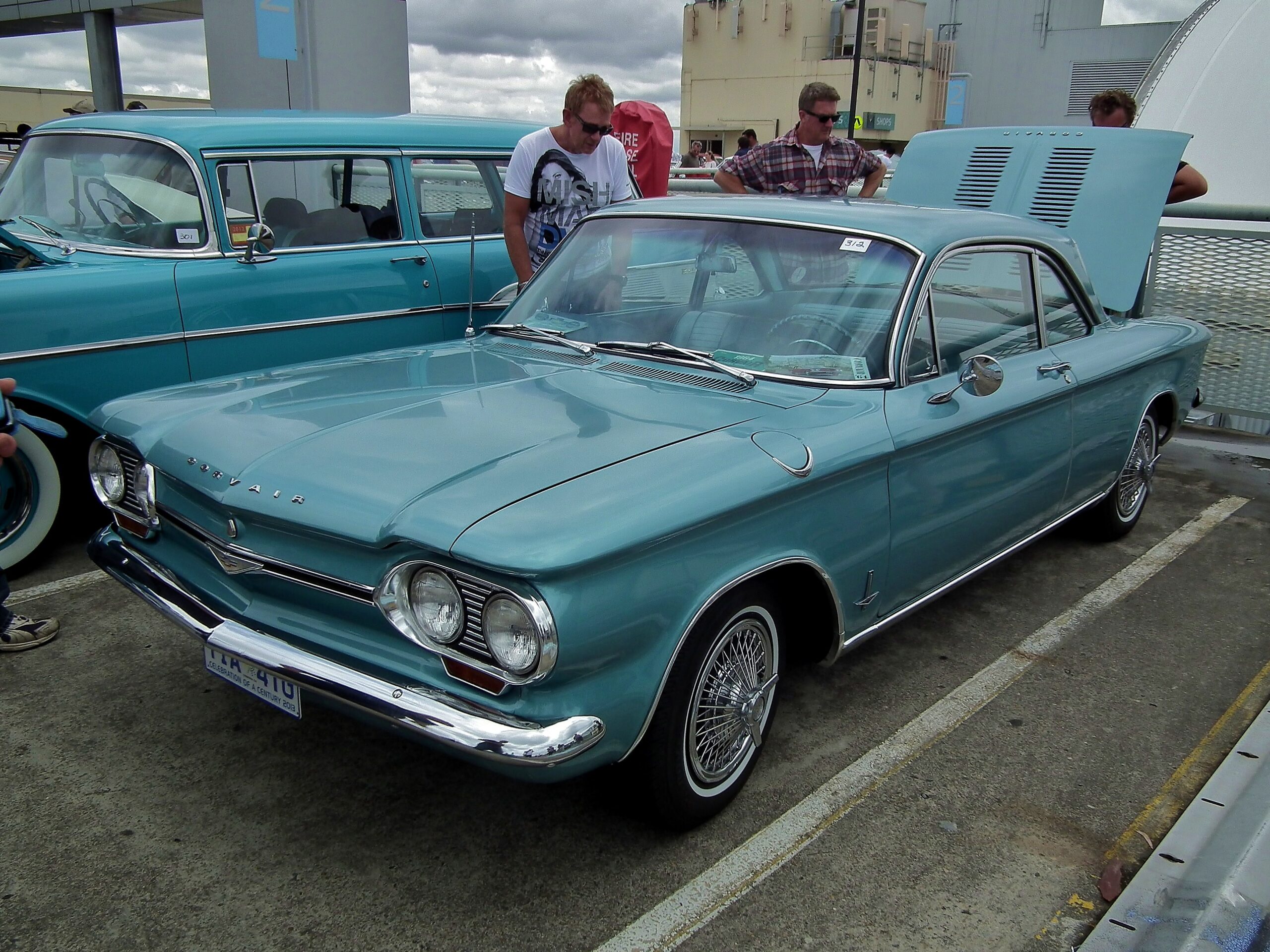
9. **Chevrolet Corvair**:In the 1960s, the Chevrolet Corvair emerged as a daring departure from traditional American automotive design, presenting itself as a rear-engine, lightweight sports coupe that stood apart from its contemporaries. Despite its innovative spirit, the Corvair tragically became the poster child for alleged safety flaws, forever linked to Ralph Nader’s seminal book, “Unsafe at Any Speed,” which cast a long shadow over its reputation.
Nader’s accusations centered on the Corvair’s perceived propensity for rolling over during abrupt handling maneuvers, primarily due to its lack of an anti-roll bar. This narrative took root deeply in the public consciousness, intensified by the revelation that General Motors had employed private detectives to gather information on Nader, an act that further eroded public trust and amplified the controversy surrounding the vehicle. The damage to the Corvair’s image seemed irreparable, turning a genuinely novel car into a symbol of corporate negligence.
However, the full story of the Corvair is more nuanced than its initial notoriety suggests. A comprehensive study conducted by the U.S. government in the early 1970s ultimately vindicated the car, concluding that its rollover rate was comparable to that of other lightweight cars of its era. Moreover, it was pointed out that the second-generation Corvair featured a redesigned suspension, making Nader’s criticisms largely outdated by the time they were published. This vindication, however, came too late to save its initial reputation.
Despite the intense backlash and enduring negative perception, the Corvair’s enduring qualities meant it sold over 1.8 million units during its decade-long run, offered in various forms including coupes, convertibles, wagons, vans, and pickups. Today, the Corvair is celebrated by enthusiasts as an “extraordinary car” for its time, with decent condition models remaining surprisingly affordable. Its journey from a groundbreaking design to a controversial symbol and, finally, to a respected classic demonstrates how objective analysis can eventually temper, though rarely erase, a car’s undeserved notoriety.
Car Model Information: 1966 Chevrolet Corvair
Caption: 1964 Chevrolet Corvair Monza
Name: Chevrolet Corvair
Manufacturer: Chevrolet
Production: July 1959
Platform: GM Z platform
Chassis: Unibody
ModelYears: 1960–1969
Assembly: United States,Kansas City, Missouri,Oakland, California,Van Nuys,St. Louis,Flint, Michigan,Belgium,Canada,Mexico,South Africa,Switzerland,Venezuela
Class: Compact car
Successor: Chevrolet Vega
Layout: Rear-engine, rear-wheel-drive layout
Categories: All Wikipedia articles written in American English, All articles lacking in-text citations, All articles needing additional references, All articles with dead external links, All articles with specifically marked weasel-worded phrases
Summary: The Chevrolet Corvair is a rear-engined, air-cooled compact car manufactured and marketed by Chevrolet over two generations from the 1960 through 1969 model years. The Corvair was a response to the increasing popularity of small, fuel-efficient automobiles, particularly the imported Volkswagen Beetle and American-built compacts like the Rambler American and Studebaker Lark.
The first generation (1960–1964) was offered in four-door sedan, two-door coupe, convertible, and four-door station wagon configurations. A two- and four-door hardtop, as well as a convertible, were available as second-generation variants (1965–1969). The Corvair platform was also offered as a subseries known as the Corvair 95 (1961–1965), which consisted of a passenger van, commercial van, and pickup truck variant. Total production was approximately 1.8 million vehicles from 1960 until 1969.
The name “Corvair” was first applied in 1954 to a Corvette-based concept with a hardtop fastback-styled roof, part of the Motorama traveling exhibition. When applied to the production models, the “air” part referenced the engine’s cooling system.
A prominent aspect of the Corvair’s legacy derives from controversy surrounding the handling of early models equipped with rear swing axles, articulated aggressively by Ralph Nader’s Unsafe at Any Speed but tempered by a 1972 Texas A&M University safety commission report for the National Highway Traffic Safety Administration (NHTSA) which found that the 1960–1963 Corvair possessed no greater potential for loss of control in extreme situations than contemporary compacts.
To better counter popular inexpensive subcompact competitors, notably the Beetle and Japanese imports such as the Datsun 510, GM replaced the Corvair with the more conventional Chevrolet Vega in 1970.
Get more information about: Chevrolet Corvair
Buying a high-performing used car >>>
Brand: Chevrolet Model: Corvair
Price: $15,000 Mileage: 65,743 mi.
Read more about: Unleashing the Giants: 15 Cargo Vans Delivering Unrivaled Space and Power for Your Business Needs
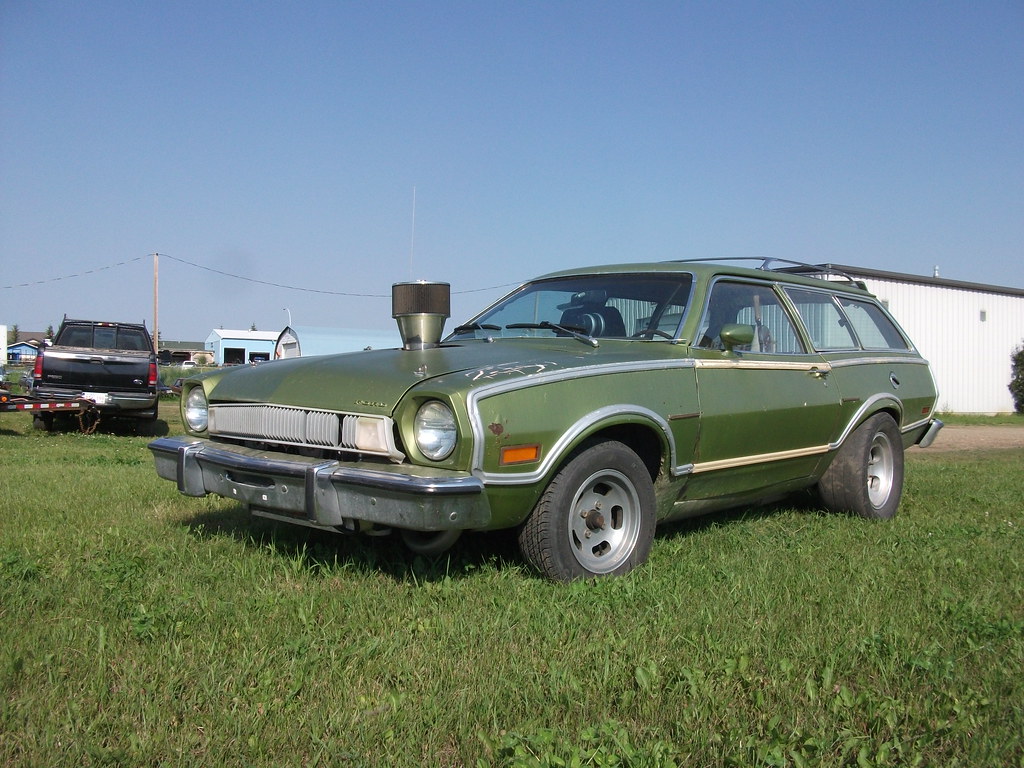
10. **Ford Pinto**:The Ford Pinto entered the market in 1971, seemingly arriving at a fortuitous moment. This compact car, available in sedan and hatchback body styles, and later a two-door wagon, was poised to meet the growing demand for smaller, more fuel-efficient vehicles. Its timing proved especially prescient with the OPEC oil embargo in 1973, which triggered the first great oil shock and skyrocketing gas prices. Consequently, Ford sold over half a million fuel-sipping Pintos in 1974, indicating a strong initial success for the affordable model.
However, the Pinto’s destiny took a grim turn as reports of fiery fatal crashes began to circulate, plunging the car into a safety crisis that would forever define its legacy. The core of the problem lay in the design of its gas tank, which was positioned just aft of the rear axle. In rear-end collisions, this placement caused the tank to strike the differential and rupture, leading to horrific fires and earning the Pinto a reputation as “one of the worst Ford models ever made.”
The controversy intensified with rumors alleging that Ford had deliberately rejected proposed preventive measures, such as installing a bladder in the fuel tank or relocating it, in order to save time and money during the car’s rushed development. This perception of corporate negligence fueled public outrage and led to millions of dollars paid out in lawsuits, casting a long shadow over Ford’s design and ethical practices. The car’s “deadly image” became deeply ingrained in the public’s imagination, ensuring that the Pinto name would never be resurrected.
Yet, much like the Corvair, the reality behind the Pinto’s notoriety is more complex. A study by the National Highway Traffic Safety Administration (NHTSA) found that the Pinto’s overall fatality rate was comparable to that of other compact cars of its period. Despite this, the visceral fear evoked by the fiery crashes was undeniable, and the word “Pinto” became a byword for negligent safety failures in automotive design. The Pinto stands as a permanent, cautionary tale about the critical intersection of cost-cutting, rapid development, and public safety in automotive engineering.
Car Model Information: 1980 Ford Pinto WAGON
Name: Ford Pinto
Caption: Ford Pinto
Manufacturer: Ford Motor Company
Aka: Mercury Bobcat
Production: September 1970 – July 1980
ModelYears: 1971–1980 (Pinto),1974–1980 (Bobcat)
Assembly: Edison, New Jersey,Milpitas, California
Designer: Robert Eidschun (1968)
Class: Subcompact car
BodyStyle: Sedan (automobile),sedan delivery,station wagon,hatchback
Related: #Mercury Bobcat (1974–1980),Ford Mustang (second generation)
Layout: Front-engine, rear-wheel-drive layout
Chassis: Unibody
Engine: unbulleted list
Abbr: on
Disp: Ford Cologne engine
Transmission: unbulleted list
Wheelbase: 94.0 in
Length: 163 in
Width: 69.4 in
Height: 50 in
Weight: convert
Predecessor: Ford Cortina#Mark II (1966–1970)
Successor: Ford Escort (North America)
Categories: 1980s cars, Articles with short description, Cars discontinued in 1980, Cars introduced in 1970, Commons category link from Wikidata
Summary: The Ford Pinto is a subcompact car that was manufactured and marketed by Ford Motor Company in North America from 1970 until 1980. The Pinto was the first subcompact vehicle produced by Ford in North America.
The Pinto was marketed in three body styles throughout its production: a two-door fastback sedan with a trunk, a three-door hatchback, and a two-door station wagon. Mercury offered rebadged versions of the Pinto as the Mercury Bobcat from 1975 until 1980 (1974–1980 in Canada). Over three million Pintos were produced over its ten-year production run, outproducing the combined totals of its domestic rivals, the Chevrolet Vega and the AMC Gremlin. The Pinto and Mercury Bobcat were produced at Edison Assembly in Edison, New Jersey, St. Thomas Assembly in Southwold, Ontario, and San Jose Assembly in Milpitas, California.
Since the 1970s, the safety reputation of the Pinto has generated controversy. Its fuel-tank design attracted both media and government scrutiny after several deadly fires occurred when the tanks ruptured in rear-end collisions. A subsequent analysis of the overall safety of the Pinto suggested it was comparable to other 1970s subcompact cars. The safety issues surrounding the Pinto and the subsequent response by Ford have been cited widely as business ethics and tort reform case studies.
Get more information about: Ford Pinto
Buying a high-performing used car >>>
Brand: Ford Model: Pinto
Price: $5,951 Mileage: 107,000 mi.
Read more about: Rev Up Your Restoration Dreams: 15 Classic American Cars That Are More Affordable to Bring Back to Life Than You Think
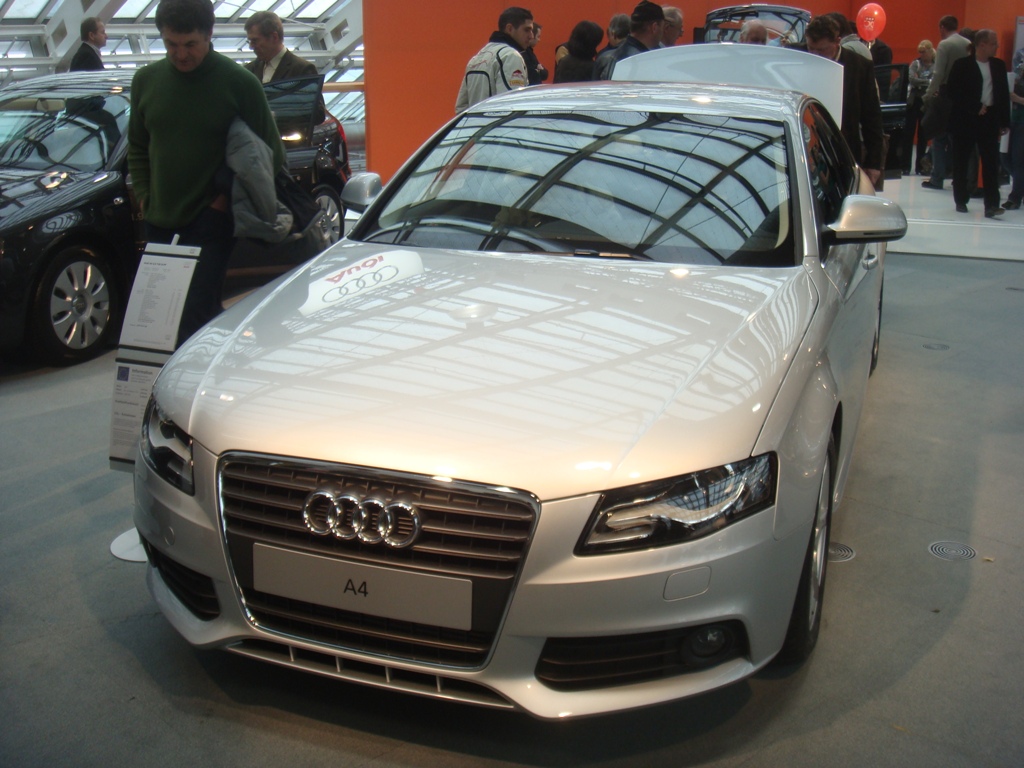
11. **Audi 5000**:In the 1980s, the Audi 5000 was a beacon of German engineering, riding a wave of enthusiasm for luxury sports sedans. It was widely acclaimed as a worthy, all-wheel-drive offering, praised by publications like Car & Driver, which called the 1984 5000S Turbo a “top speed star” equally at home on twisty roads and high-speed autobahns. Its reputation for performance and sophistication was building impressively until allegations of “sudden acceleration syndrome” brought its promising trajectory to a screeching halt.
The crisis exploded into widespread public consciousness following a sensational “60 Minutes” segment in 1986. The broadcast featured multiple drivers recounting terrifying instances of their Audis accelerating out of control while they desperately applied the brakes. Critics later argued that the segment “stacked the deck” by demonstrating the issue using a compressed air canister connected to the transmission of a 5000, which made the car shift into gear on its own, thereby exaggerating the problem and spooking the public into a panic.
The immediate aftermath was catastrophic for Audi. Sales plummeted dramatically, from 74,000 to a mere 12,000 units, as consumers lost faith in the vehicle’s safety. For years, the NHTSA investigated the claims, meticulously studying the issue. Their eventual conclusion, aligning with what many Audi enthusiasts had suspected all along, was “pedal misapplication.” American drivers, accustomed to widely spaced pedals and larger brake pedals in domestic cars, were mistakenly stepping on the accelerator due to the smaller, more closely spaced pedals in the Audi.
The fallout from this unjustified defamation was immense and enduring. Audi was compelled to change the name of the 5000 to the 100 and 200 series in the North American market, and it took a staggering 15 years for the brand’s sales to fully recover. Furthermore, the scandal left an indelible mark on the entire automotive industry: today, most cars incorporate a brake-shift interlock, requiring the driver to depress the brake pedal before shifting into gear, a direct legacy of the Audi 5000 controversy. It stands as a profound example of how media influence and public perception can unjustly tarnish an otherwise excellent vehicle and reshape industry standards.
Car Model Information: 2018 Audi Q7 3.0T Prestige
Name: Audi 100 / Audi 200 / Audi 5000
Aka: Audi 5000 (North America)
Manufacturer: Auto Union
Production: 1968–1994
Class: Luxury vehicle#Mid-size luxury.2Fexecutive cars
Layout: front-wheel drive
Platform: Volkswagen Group C platform
Successor: Audi A6
Categories: 1970s cars, 1980s cars, 1990s cars, 2000s cars, All-wheel-drive vehicles
Summary: The Audi 100 and Audi 200 (and sometimes called Audi 5000 in North America and Audi 500 in some markets like New Zealand and South Africa) are primarily mid-size/executive cars manufactured and marketed by the Audi division of the Volkswagen Group. The car was made from 1968 to 1997 across four generations (C1–C4), with a two-door model available in the first and second generation (C1-C2), and a five-door model available in the last three generations (C2–C4).They also made an 100 Avant in the 1970s.
In 1982, the third generation Audi 100 achieved a remarkably low (for its time) drag coefficient of 0.30, featuring flush greenhouse sides with unique sliding window mountings.
The C2 and C3 models of the Audi 100 were marketed in North America as the Audi 5000 from 1978 to 1988, and in South Africa as the Audi 500.
In 1993, the models were mildly restyled, and renamed the Audi A6 series in conjunction with a general new Audi naming scheme, until they were replaced by a new generation of A6, internally code-named C5, in 1997. The Audi 100’s traditional competitors include the Mercedes Benz E-Class and BMW 5-Series.
Get more information about: Audi 100
Buying a high-performing used car >>>
Brand: Audi Model: 5000
Price: $23,950 Mileage: 98,826 mi.
Read more about: Mastering the Miles: 15 Critical Maintenance Tips to Keep Your Ford Explorer Running Strong Past 250,000

12. **Porsche Cayenne**:The debut of the Porsche Cayenne in 2003 represented a seismic shift for the iconic sports car manufacturer, unleashing a wave of horror among devout Porsche purists. For generations, the brand had been synonymous with lightweight, high-performance, two-door sports cars, making the introduction of a large, four-door, four-wheel-drive SUV an almost sacrilegious act in their eyes. The very idea of a Porsche SUV was met with fierce decrial, seen as a betrayal of the company’s core mission and heritage.
The initial controversy stemmed from this radical departure from tradition. Critics questioned whether a luxury SUV could ever embody the essential qualities of a Porsche: nimble handling, blistering speed, and an uncompromised driving experience. Many observers struggled to reconcile the brand’s performance-oriented identity with a vehicle designed to traverse diverse terrains and accommodate families, particularly given its hefty weight and formidable size.
Yet, the Cayenne proved to be a masterful gamble that paid off handsomely. It silenced its critics by delivering unprecedented levels of performance and handling for an SUV, proving itself “blisteringly fast,” especially with its turbocharged 4.5-liter V8 engine producing 450 horsepower. It quickly became Porsche’s best-seller, winning over drivers and defying expectations. Indeed, some automotive historians credit the Cayenne with single-handedly saving Porsche from potential bankruptcy, providing the financial lifeline needed to fund future sports car projects and secure the brand’s longevity.
Beyond its commercial triumphs, the Cayenne’s legacy is defined by its transformative influence on the luxury automotive market. Despite initial questions about its serious off-road capabilities—critics argued it could have been lighter and faster without them—Porsche’s commitment to engineering excellence ensured it was capable of going where almost no sane owner would dare. The Cayenne blazed a trail that countless other high-end manufacturers, from Jaguar to Bentley, soon followed, effectively legitimizing the luxury SUV segment and cementing its status as an iconic pioneer that fundamentally reshaped the automotive landscape.
Car Model Information: 2016 Porsche Cayenne Turbo S
Name: Porsche Cayenne
Manufacturer: Porsche
Production: August 2002–present
ModelYears: 2003–present
Class: crossover SUV
Layout: Front-engine, four-wheel-drive
Categories: 2010s cars, 2020s cars, All-wheel-drive vehicles, All articles needing additional references, All articles with dead external links
Summary: The Porsche Cayenne is a series of automobiles manufactured by the German company Porsche since 2002. It is a luxury crossover SUV, and has been described as both a full-sized and a mid-sized vehicle. The first generation was known within Porsche as the Type 9PA (955/957) or E1. It was the first V8-engined vehicle built by Porsche since 1995, when the Porsche 928 was discontinued. It is also Porsche’s first off-road variant vehicle since its Super and Junior tractors of the 1950s, as well as the first production Porsche with four doors. Since 2014, the Cayenne has been sold alongside a smaller Porsche SUV, the Macan.
The second-generation Cayenne (Type 92A or E2) was unveiled at the 2010 Geneva Motor Show in March. The Cayenne shares its platform, body frame, doors, and electronics with the Volkswagen Touareg and Audi Q7. It received a facelift in 2014 with minor external changes, and introduced a new plug-in E-Hybrid version with its public launch at the Paris Motor Show. Since 2008, all engines have featured direct injection technology. The third generation (Type 9YA or E3) was unveiled in 2017 in the German city of Stuttgart.
Get more information about: Porsche Cayenne
Buying a high-performing used car >>>
Brand: Porsche Model: Cayenne
Price: $44,365 Mileage: 81,796 mi.
Read more about: Unveiling the Truth: 12 Crucial Insights About the All-Electric Porsche Taycan Every Enthusiast Needs to Know
These 12 vehicles, initially met with confusion, criticism, or outright scorn, serve as compelling chapters in the ever-evolving narrative of automotive innovation. They remind us that the path to iconic status is rarely straightforward, often paved with risk, reevaluation, and the passage of time. From pioneering safety features to radical design philosophies, each car in this lineup challenged conventional wisdom, igniting fierce debates that ultimately highlighted the deep passion and diverse opinions within the automotive world. Their journeys from controversy to enduring acclaim or cult admiration underscore a fundamental truth: some of the most memorable and impactful stories in automotive history are born not from conformity, but from the audacious spirit of those who dare to design differently.

